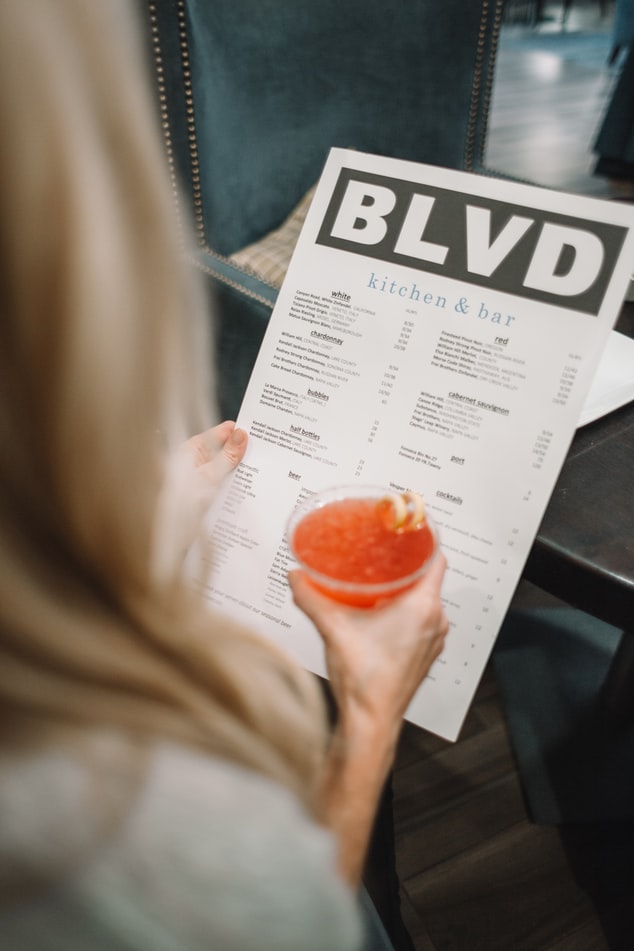How To Create The Best Menu For Your Restaurant

Building the right menu for your restaurant takes a bit of time and research. You cannot throw together a menu that only contains things you have seen from other restaurants as guests will be sure to notice and possibly leave. Some people will copy other restaurants because they like the things they see. However, you need to consider what your menu will look like when people buy from each section and if the foods flow well together. Use the steps below to make a restaurant menu that you can be proud of and that will keep drawing guests back to experience it.
What Sections Will Be in the Menu?
You need to decide which sections will be listed in the menu before you start. Do you want a cocktail section? Do you have wines to list? Do you want extras like appetizers, entrees, soups, and salads? How will it be organized and divided for not only ultimate up-sale but also functionality? There are several sections that you can add to your menu to make it easier to read and understand while also making your most expensive dishes more appetizing. You do not need to use traditional labels for your menu, and you most certainly do not need to make the menu big if you do not want.
Add Gluten-Free, Vegan, And Vegetarian Symbols
As you build your menu, you should consider adding symbols and a key that show people when a dish is vegan, vegetarian, and/or gluten-free. It will not only save your waitstaff time chance to eat without worrying about how their body will react to the food.
Connect the Different Parts of the Menu
If you have nachos as an appetizer, you can add a few more amazing ingredients as well as increase portion size and sell it as an entree nacho that is far more complex without increasing ingredient costs too much. However, it is imperative that these entree nachos are described as even more amazing because of the ingredients you have added in order to up-sale. You may note that your customers can buy a certain cocktail or wine to match with something on the menu, and you may make the same dish with different proteins.
For example, if you make a chicken dish that you are proud of, you can describe the steak version as the one that steak lovers must try. You are giving people a reward for reading the whole menu, and you are creating a narrative throughout the menu that connects the drinks and appetizers to the desserts.
Do You Offer Sides?
You need to decide if you would like to offer special sides on the menu. When you are using sides as part of the menu, you must note how many sides the customer gets with each dish. If you want to go the extra step, you can recommend sides for each dish. You may also want to create special entrees that consist of nothing but sides.
Do You Offer Drinks?
You can put your drinks on the regular menu, or you could make a separate drink menu. If you offer special cocktails, those cocktails need to be listed in a very visible place where the customers can still find them. Show if you have beer in bottles, cans, or on tap. Note if you sell wine by the glass or the bottle. Note if you sell straight liquor, and explain the basic drinks your bartender can make.
What About Desserts?
When you are writing up the deserts for your menu, you need to decide how they will be presented. Some people like to put pictures of their desserts on the menu. There are some restaurants that will have a dessert platter that can be shown to each table as an example, and there are still more dessert menus that are very minimalistic. You may also offer coffee, tea, Irish whiskey, and port wine as part of the dessert menu.
How Long Is Your Menu?
Your menu should be as long as it takes to list all your dishes. However, the aesthetic and brand of every restaurant is different and should be considered when formatting the length of your menu. Some restaurants have very large spiral bound menus. Some menus are one page and modern, and others fold open because the menu is only a few pages. You simply need to decide which length matches the personality of your restaurant.
Conclusion
There are a number of things that you can do to ensure that your menu will look perfect once it has been completed and that it remains on brand for your restaurant and the type of clientele you hope to attract. You can apply all of these ideas to your menu as you begin to create a concept for your restaurant, and you can adjust your menu to meet the needs of your kitchen and dining room.

















